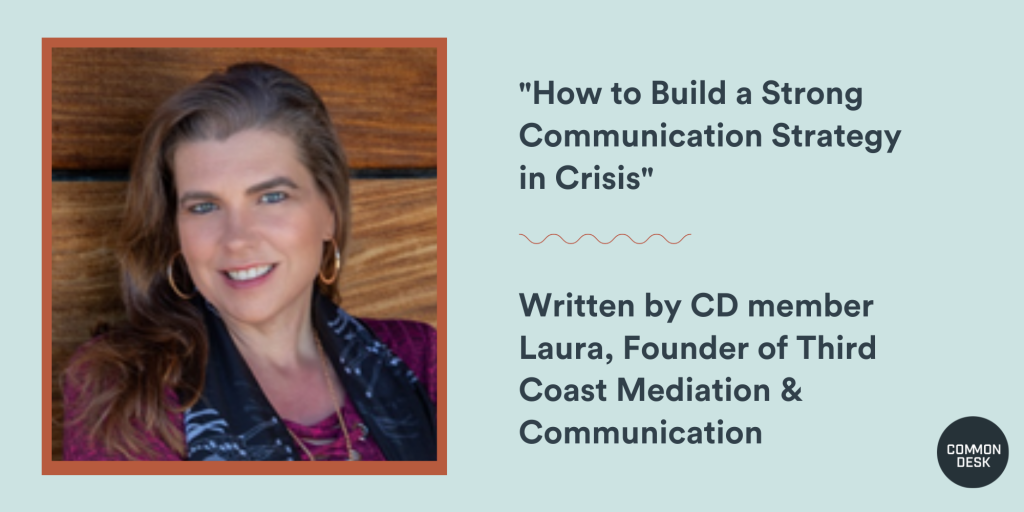We’re excited to share another member-written article with you! Say hello to Laura, an amazing member of Common Desk – Addison. Laura is the founder of Third Coast Mediation & Communication and dedicates her days to conflict resolution. As a conflict and communication consultant, she helps facilitate family and business mediations, as well as develop written communication for web, public relations, or print. It’s easy for professionals to find themselves in situations where an intended audience doesn’t understand the message being shared; for this very reason, Laura helps brands be heard. In this blog, Laura shares her top 3 tips to help companies know how to build a strong communication strategy, especially when it’s needed most.

Right now isn’t the first time our society has faced a health crisis around disease like COVID-19, but this is the first time in human history that our world has the technology and tools available on a global scale to stay connected even in isolation. Calls, texts, Facetime, Hangouts, email, social media platforms … Dozens of streaming services, endless loops of news updates, digital books on demand from our favorite authors, sharing music playlists, Zoom meetings (So many Zoom meetings…). That is a lot of technology!
It’s easy to get overwhelmed with so many options of HOW to communicate, that we could miss WHAT we are communicating. Or even worse, opt NOT communicate at all. Some of you may be afraid to reach out because you aren’t sure what to say given the uncertain times we’re living in. As far as the HOW: pick what you feel most confident using. For most people, that includes calling, email, social media, and scheduling Zoom conference calls. Now, the big question…what about the WHAT? If you have found yourself at a grinding halt and not sure how to get your communications started, here are three crucial tenants to build your communication strategy.
- Build trust. Now is the time to build trust with your audience by providing content that speaks to their challenges and shows empathy for their current situation. Your audience includes your clients, contacts, network, anyone in your sphere of influence which with you want to touch base. What should you include in an email?
- An update about how your company is doing
- New services or products
- Advantage that your product/service could offer during this time
- A particular expertise you could share that would be helpful right now
- Your expertise or insight on a current situation
You get the idea. An email newsletter is a great way to build trust. (In a follow-up post, I will give you some tips and a simple template for getting your email newsletter started.)
2. Deepen existing relationships. Right now is a great time to focus on providing your existing clients with valuable content that is relevant and meaningful. Make some phone calls to current clients and spend time engaging with your community on social media, create content, and share links in which they can relate. The more present you are, the more assured your clients will feel. Take the emails you have sent out from Step One above and post them on your website. Then take that link to your website and post on your social media.
3. Take short-term actions that reflect our new reality. Clients or prospective clients might be afraid of making long-term commitments to a brand, product, service, or subscription. Think about what you can do to help your customers in the short-term. A free content offer is a great way to assist prospects with paused budgets. Depending on your service, think about a how-to video series, an ebook, a free product, free trial, etc. Whatever makes sense in your business model. Once you have established your immediate actions or value-additions, go back to Step One on this list and make sure everyone on your email list knows about it! After that, go to Step Two and post it on your social media. Have conversations.
You may have noticed the steps above all feed into each other. The hard part is getting the ball rolling. Once you do, you’ll be consistent in your flow of communication with your contacts. It is especially critical right now and also a business practice that will serve you well after we get through this current season. Consistency in communication is our greatest champion and is what ultimately keeps us moving the right direction!

















